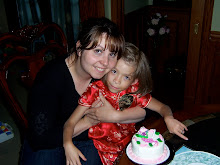Thank you for Today's discussion in class. Please know that our classroom is a safe place. Our classroom is a place that is meant for us to learn, develop and grow. We will all learn from each other, so please let your voice be heard.
Thank you Kris for beginning our discussion on stereotypes. I would like to take that discussion a bit further and continue to discuss it on our blog.
From now on you have until Thursday night at 11:30pm to complete your comment #1 and your comment #2 is due Monday at 11:30 pm. Please do plan accordingly and complete your assignment on time.
Defining stereotyping, prejudice, and discrimination
Definitions
Stereotyping:
- Stereotypes involve generalizations about the "typical" characteristics of members of the groups. Jane is a female, so she probably has characteristics x, y, z, .......
Prejudice:
- attitude toward the members of some group based solely on their membership in that group (can be positive or negative)
Discrimination:
- actual positive or negative actions toward the objects of prejudice
Cognitive Sources of Prejudice: Stereotypes
Measuring stereotypes
Several ways of measuring stereotypes
For example:(1) By measuring the straightforward attribution of characteristics to nominated groups
Baptists are....?Men are...?
Blacks are...?
Mormons are...?
Whites are...?
Doctors are...?
Women are...?
Professors are...?(2) By identifying the salient characteristics attributed to groups (relative to other groups).
What characteristics "stand out" the most about the group?Football players?
Car salespeople?
Actors?
Where do Stereotypes Come From?
Cognitive sources
- Social categorization: classifying people into groups based on common attributes (back to the cognitive miser idea)
- Ingroup - outgroup & the outgroup homogeneity effect:
Assuming greater similarity among characteristics of the outgroup than ingroup ("us" vs. "them")
Based on several factors:
- We don't have as much exposure to members of the outgroup (compared to members of ingroup). So, we don't have chance to learn about individual idiosyncrasies in outgroup members
- Probably also a cultural phenomenon. Americans really show the outgroup homogeneity effect compared to other cultures. Americans like to see self as "individualistic"
What Impact do Stereotypes Have?
- Distort our perceptions: The contrast effect
- Once stereotype is activated, these traits easily come to mind
- Affect the information we attend to and, therefore, notice and quickly process
- We'll attend more to stereotype-consistent information
- Stereotype-inconsistent information activates attempts to disconfirm/reject it
Stereotypes obviously affect social judgments we make about other:
- They influence how much we like the person
- They are reflected in the mood the person "puts" us in
- Our expectations regarding probability of certain behaviors in the person
Stereotypes develop for a reason but why and when do they become dangerous? What can you do to educate yourself about race, gender, sexual orientation, and religion to see a person as an individual within these groups?






